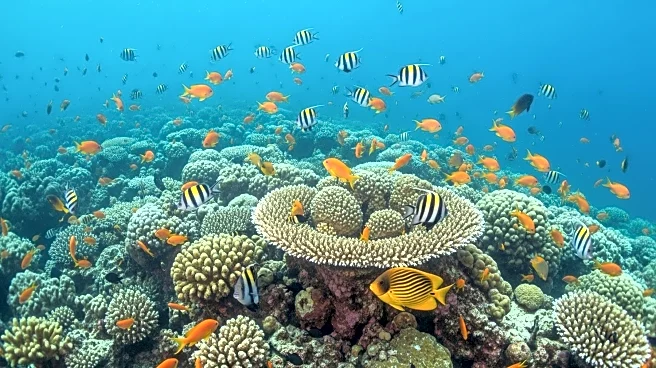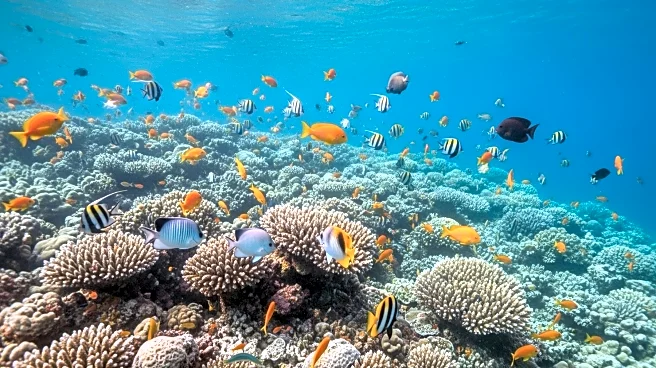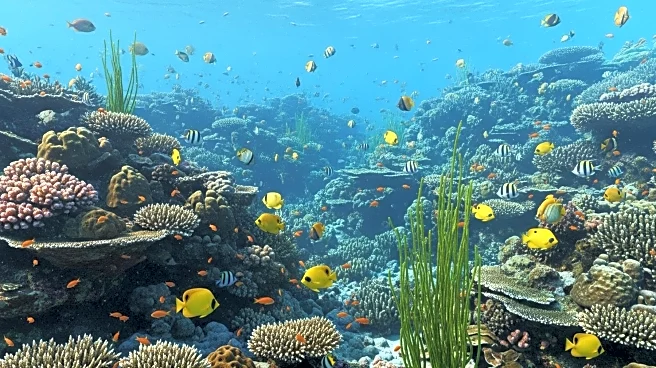What's Happening?
The marine aquarium fish trade heavily relies on wild populations, with most fish sold in the U.S. being wild-caught. Research led by Dr. Bing Lin from the University of Sydney highlights the opaque supply chains that obscure the origins of these fish. The study found that 90% of marine fish species sold by major U.S. retailers are sourced from the wild, raising concerns about the sustainability of the trade. Many species sold are listed as threatened, and the trade could exacerbate their decline.
Why It's Important?
The reliance on wild-caught fish poses significant risks to marine biodiversity and ecosystem health. Unsustainable practices could lead to the depletion of fish populations, affecting both the environment and local communities that depend on these fisheries. Increased consumer awareness and stronger regulations are needed to ensure the trade does not harm marine life. The findings may prompt calls for more sustainable practices and better traceability in the aquarium fish industry.
What's Next?
Efforts to improve transparency and sustainability in the aquarium fish trade may include the development of eco-certification schemes and enhanced oversight of supply chains. Stakeholders might push for stricter regulations to protect threatened species and promote aquaculture as a viable alternative. Consumer education campaigns could also play a role in encouraging responsible purchasing decisions.
Beyond the Headlines
The study underscores the ethical considerations of the aquarium fish trade, highlighting the need for responsible consumer behavior and industry practices. It raises questions about the balance between economic interests and environmental conservation, potentially influencing future policy decisions.










